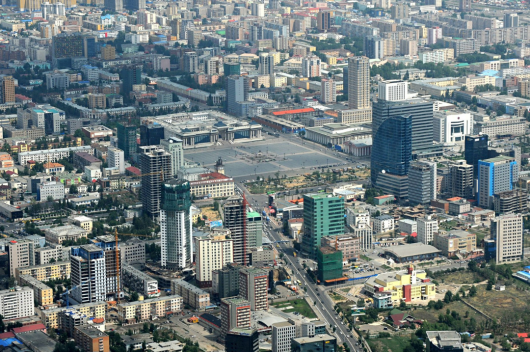As the world continues to battle the COVID-19 crisis, it is instructive to look at how the private sector has coped since the onset of the pandemic over one year ago. The World Bank has conducted a series of surveys of the private sector in Mongolia, through a representative sample of 360 formal non-agricultural and non-extractive firms with 5 or more employees. These firms were interviewed as part of the standard Enterprise Surveys in 2019. Two follow-up surveys were implemented, in August 2020, and in February 2021. The survey data suggests that while Mongolia’s businesses are still going through very difficult times, there are already some encouraging signs of recovery.
Impact on firm finances across multiple measures has been widespread and increasing. Since the onset of the pandemic, nearly all firms went through a liquidity crunch; 99 percent as of February 2021, up from 82 percent in August 2020. Nearly 90 percent of firms delayed payments to their suppliers for one week or longer, up from 67 percent in August 2020. Prevalence of overdue obligations to financial institutions has shown a staggering increase from 27 to 76 percent over this period. Expectations about future financial strain has worsened as well, with 89 percent anticipating falling in arrears on outstanding liabilities.
Many firms have resorted to closing, but with the majority expecting to reopen in the future. A shockingly high share of firms has permanently shut their doors to try to at least avoid continued losses; 27 percent, up from 3 percent in August 2020. Small firms (5 to 19 employees) are twice as likely to have closed than large firms (100 or more employees) exposing a gap in firm capabilities and resiliency. However, 62 percent of the firms that permanently closed anticipate reopening in the future, providing a glimmer of hope for a speedy recovery after massive uncertainties recede.
The demand shock is subsiding, with firms appearing to gear back up to speed, though amid lingering supply shocks. The share of firms experiencing lower demand compared to the same month one year ago decreased by 20 percentage points to reach 59 percent in February 2021, which is still painfully high but representing an encouraging move in a desirable direction. As firms try to meet this recovering demand, the average capacity utilization (measured for manufacturing firms) reached 97 percent, up from 71 percent in August 2021. As part of this recovery, the share of firms that shrank their workforce as compared to December 2019 is now down to 28 percent, almost half of the level in August 2021. Supply remains difficult however, with 76 percent of firms experiencing decreased supply in inputs, perhaps pointing to bottlenecks in the supply chains.
Businesses are continuing to adjust, increasingly using technology to facilitate safety while trying to keep working. A large part of these first steps toward recovery is the remarkable flexibility of businesses, with more than half of firms reporting having adjusted or converted their production or services (55 percent). Nearly a third of businesses have started or increased their online business activity (31 percent), and 40 percent have started or increased contact-less delivery. The average proportion of the workforce working remotely has reached an astonishing 29 percent as of February 2021, up from 11 percent in August.
The coverage of government support has increased, with many businesses expecting to receive it soon. Two-thirds of businesses have received or expect some form of government support, up from 47 percent in August 2020. This is mostly due to an increase in expectations; 26 percent of businesses are expecting support in the next three months, up from 12 percent in August 2020. The government appears to use many levers of support, with some targeting to small firms, which are likely most in need.
The road to full recovery is likely to be long and arduous, with monumental efforts needed across many areas, including facilitating vaccinations and other health measures. While many businesses in Mongolia made the hard decision to close, and many others have gone through a painful process of adjustments to their workforce or their entire line of work, the remarkable flexibility shown by the private sector may be a silver lining, as we see signs of recovering demand.
 3,575.44
3,575.44












Related News